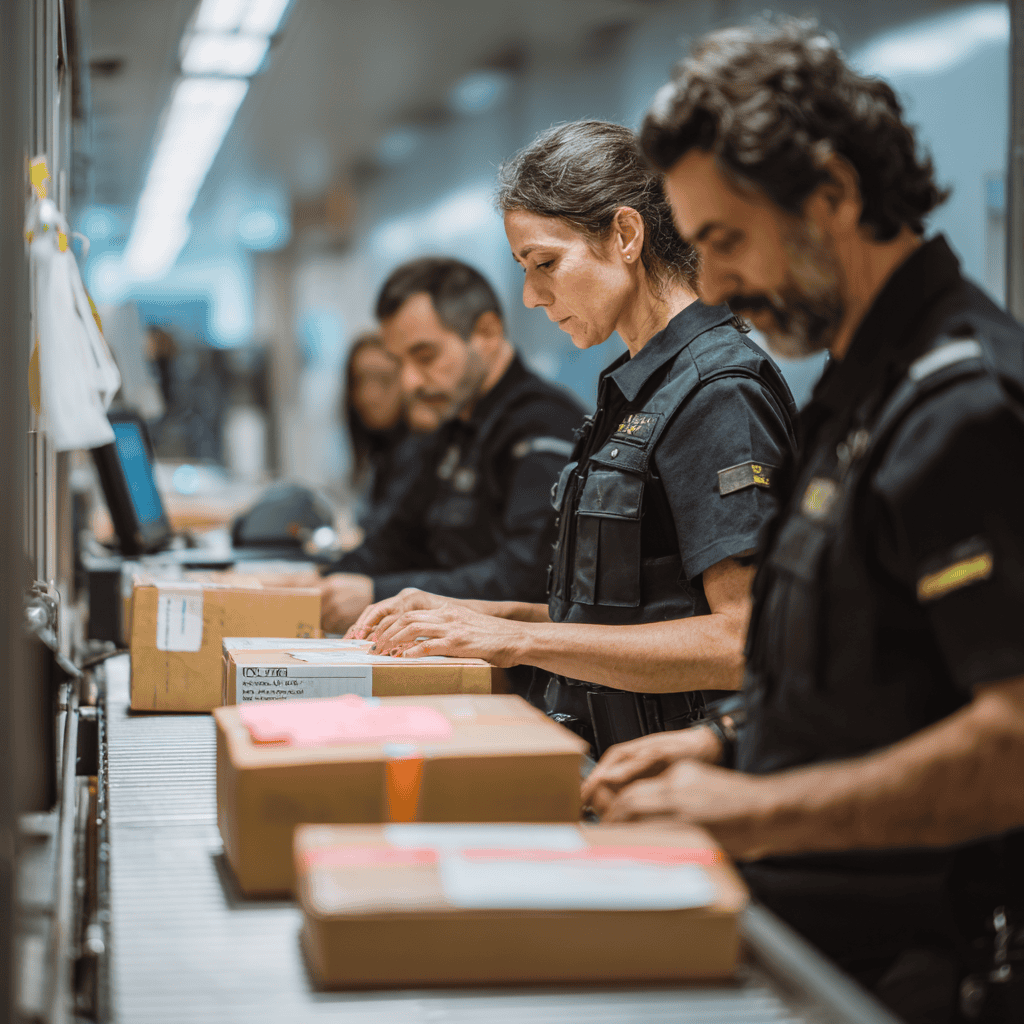Understanding De Minimis Value: A Practical Guide for Global E-commerce Success
Over 4 million parcels per day enter Canada and the U.S. under low‑value programs, accounting for more than 90% of all import volume. For E-commerce businesses, this isn’t just a customs detail; it’s a defining factor in shipping costs, delivery speeds, and customer satisfaction. The key to turning cross-border complexity into growth lies in understanding de minimis value, a deceptively simple rule.
What is De Minimis Value?
In plain terms, de minimis value refers to the minimum monetary threshold below which goods can enter a country without incurring duties or taxes. The term stems from Latin: de minimis non curat lex, meaning “the law does not concern itself with trifles.” Fitting, considering this rule is designed to remove regulatory friction on low-value shipments.
Why Do Governments Use It?
De minimis rules were created to simplify trade and reduce costs for both border agencies and businesses. Governments benefit by freeing up customs resources for high-risk or high-value shipments. Importers benefit through faster processing and fewer charges. This is especially valuable for E-commerce retailers shipping globally at scale, where small savings per parcel add up quickly.
For example, Canada’s thresholds differ depending on how goods are shipped. Goods imported via courier from the U.S. or Mexico are duty-free up to CAD $40, with taxes applying up to CAD $150. Postal shipments from other countries? Still capped at a much lower CAD $20 for both duties and taxes.
How De Minimis Thresholds Work
Duties vs. Taxes
- Duties are based on the classification and origin of a product.
- Taxes, like GST, VAT, or HST, are broader and apply at point-of-sale or import, regardless of classification.
One Shipment Per Day: Section 321
The U.S. allows one duty-free shipment per day per recipient under Section 321, up to USD $800. Exceeding that limit—even via split shipments—may trigger audits or entry rejection.
Country-Specific Differences
Every country sets its own thresholds, often with exceptions. For example:
- USA: USD $800 per day (Section 321)
- Canada: CAD $20 (postal), CAD $40/150 (courier, under CUSMA)
- UK: £135, with VAT applied to all shipments
- EU: €150, VAT due on all shipments regardless of value
- Australia: AUD $1,000, but documentation is tightly controlled
Important update (2025): Goods manufactured in China no longer qualify for de minimis entry into the U.S. under Section 321 due to recent regulatory changes.
When De Minimis Doesn’t Apply
Even if a shipment’s value is below the de minimis threshold, these items are not eligible and will always be assessed for duties, taxes, or require special permits:
Alcohol & Tobacco Products
- All forms of alcohol (spirits, wine, beer) are excluded.
- Any tobacco products—cigars, cigarettes, loose tobacco, even vaping devices (vaping liquids and accessories may also fall under excise rules)—are denied de minimis treatment.
Pharmaceuticals & Healthcare Items
- Prescription medications, controlled substances, and many over-the-counter drugs (including high-sugar or alcohol-based formulas) are excluded from exemptions.
Regulated or Restricted Goods
- Firearms, ammunition, blades and knives, live plants and animals, and electronics with encryption or requiring PGA (Participating Government Agency) oversight do not qualify.
Goods Under Special Tariff or Quota
- Products subject to antidumping or countervailing duties or quota restrictions, regardless of value, are always subject to review.
Other Restricted Items
- Special categories like cannabis products, publications, and select luxury goods fall outside de minimis coverage, even if they meet the standard value test.

Why De Minimis Value Matters for E-commerce Businesses
Lower Landed Costs
Avoiding duties and taxes on lower-value shipments can dramatically reduce landed costs, the total price a customer pays, including taxes and fees. This keeps pricing competitive and reduces cart abandonment caused by unexpected charges at checkout.
Simplified Logistics
De minimis clearance is usually automated and expedited, reducing delays at customs. Faster processing means faster delivery and happier customers.
Fewer Surprises = Better CX
Nothing breaks customer trust faster than surprise charges. Ensuring your orders remain under the threshold keeps the experience transparent and frustration-free.
Opening Up New Markets
With thresholds in mind, E-commerce businesses can test entry into new countries without complex VAT registration or upfront duties, which is especially useful for SMEs and startups.
Compliance and Risk Management
Don’t Understate the Value
It might be tempting to shave a few dollars off the declared value, but that’s risky. Undervaluing shipments is a red flag for customs agencies and could result in seizures, penalties, or loss of importer privileges.
Documentation Is Key
Ensure that commercial invoices, harmonized system codes, and proof of payment match actual values and descriptions. This helps customs verify the accuracy of claims and keeps shipments moving.
Rules Are Changing Constantly
For example, the U.S. raised its de minimis threshold from USD $200 to USD $800 in 2016. In Canada, the CLVS (Courier Low Value Shipment) program is now integrated with CARM, a new digital revenue system requiring accurate tax payments, importer numbers, and security deposits.
Strategies for Leveraging De Minimis for Growth
Optimize Shipment Sizes
Large orders may trigger duties, but multiple smaller orders could qualify under de minimis rules if managed carefully and in compliance.
Distribute Inventory Closer to Customers
Fulfillment centres like SFI’s U.S. and Canadian locations help E-commerce brands route inventory strategically, reducing time-in-transit and customs complexity.
Automate Your Compliance
Tools that flag threshold limits, prepare documents, and sort eligible vs. non-eligible items help scale your business without risking non-compliance.
Partner With the Right 3PL
A fulfillment partner like SFI not only manages logistics but also stays ahead of regulation changes, offering guidance on maximizing savings through duty deferral and Section 321 strategies.
How SFI Can Support International Shipping
SFI operates as an extension of your E-commerce business, with boots-on-the-ground support across the Canada-U.S. corridor. We have licensed customs brokers who work with our customers to ensure accurate product classification, documentation, and valuation, helping you stay compliant while maximizing every shipment’s cost-efficiency.
Section 321 Fulfillment + CLVS Integration
Our proximity to the U.S. border allows us to expertly navigate both Section 321 (U.S.) and CLVS (Canada) programs. Whether your inventory is housed in our Ogdensburg facility for U.S. fulfillment or one of our Eastern Ontario hubs for Canadian shipping, our tech stack flags which orders qualify for de minimis clearance, routing them accordingly.
Built-in Tech, No Extra Overhead
SFI’s systems integrate with major E-commerce platforms to automate compliance, prepare documentation, and reduce the risk of duties being assessed unnecessarily. Our internal team is also trained on evolving frameworks like CARM and CAP, keeping your business ahead of enforcement trends.
Interested in de minimis-optimized fulfillment? Contact us, and let’s build a strategy that works.
Frequently Asked Questions
What happens if my shipment exceeds the de minimis threshold?
When a shipment exceeds a country’s de minimis threshold, it becomes subject to import duties and/or taxes, depending on the destination. This can trigger additional paperwork, customs clearance delays, and unexpected costs for the recipient. For example, a CAD $900 shipment into the U.S. no longer qualifies for Section 321 clearance and will instead require formal entry. In Canada, a postal shipment valued at CAD $100 would immediately be subject to both GST and possibly duties, depending on the item’s origin and classification.
How do I find the correct threshold for each country?
De minimis thresholds vary not only by country but also by shipping method (e.g., courier vs. postal) and trade agreements. The best sources for up-to-date information are:
- National customs websites, such as CBSA or CBP
- Trade law and E-commerce logistics blogs
- Your logistics provider or customs broker can apply the correct rules based on your product, shipment value, and origin. SFI routinely advises clients on these thresholds to ensure compliance and cost-efficiency.
Can thresholds change?
Yes—and they do. In 2016, the U.S. increased its threshold from USD $200 to USD $800, reshaping E-commerce flows overnight. Canada’s CAD $20 limit for postal shipments hasn’t changed in decades, but its courier thresholds (CAD $40/150) were introduced under CUSMA. As E-commerce evolves and governments adapt, these thresholds are subject to political, economic, and trade policy shifts. Working with a fulfillment partner who monitors these changes can help avoid surprises.
What’s the difference between duties and VAT?
- Duties are tariffs applied based on the item’s classification and origin. They’re designed to protect domestic industries and vary by product and trade agreements.
- VAT (or GST/HST in Canada) is a consumption tax. It applies broadly to most goods and services at import or sale, regardless of origin. While duties can often be avoided under de minimis rules, VAT is more likely to be applied universally, especially in countries like the UK and EU.
Can I split shipments to stay under the threshold?
Technically, you can divide orders, but customs authorities often monitor recipient frequency and value patterns. For instance, U.S. Section 321 allows one de minimis entry per day per consignee. Attempting to send multiple parcels to the same person in one day to avoid duties may result in:
- Delays due to suspicion of circumvention
- Shipments being combined by customs and reassessed
- Potential fines or investigations
E-commerce businesses should use tech tools and fulfillment partners, like SFI, that understand and apply legitimate shipment splitting rules, while avoiding compliance risks.
Sources
- Canada Border Services Agency. CBSA Assessment and Revenue Management (CARM) Schedule. https://www.cbsa-asfc.gc.ca/services/carm-gcra/schedule-calendrier-eng.html
- Canada Border Services Agency. Customs Notice 20-18: Implementation of CUSMA. https://www.cbsa-asfc.gc.ca/publications/cn-ad/cn20-18-eng.html
- Office of the United States Trade Representative. USMCA Fact Sheet: Modernizing NAFTA into a 21st Century Trade Agreement. https://ustr.gov/trade-agreements/free-trade-agreements/united-states-mexico-canada-agreement/fact-sheets/modernizing
- Statistics Canada. Monthly retail trade sales by province and territory (Table 20-10-0056-01). https://doi.org/10.25318/2010005601-eng
- U.S. Federal Register. Entry of Low Value Shipments. https://www.federalregister.gov/documents/2025/01/14/2025-00551/entry-of-low-value-shipments



